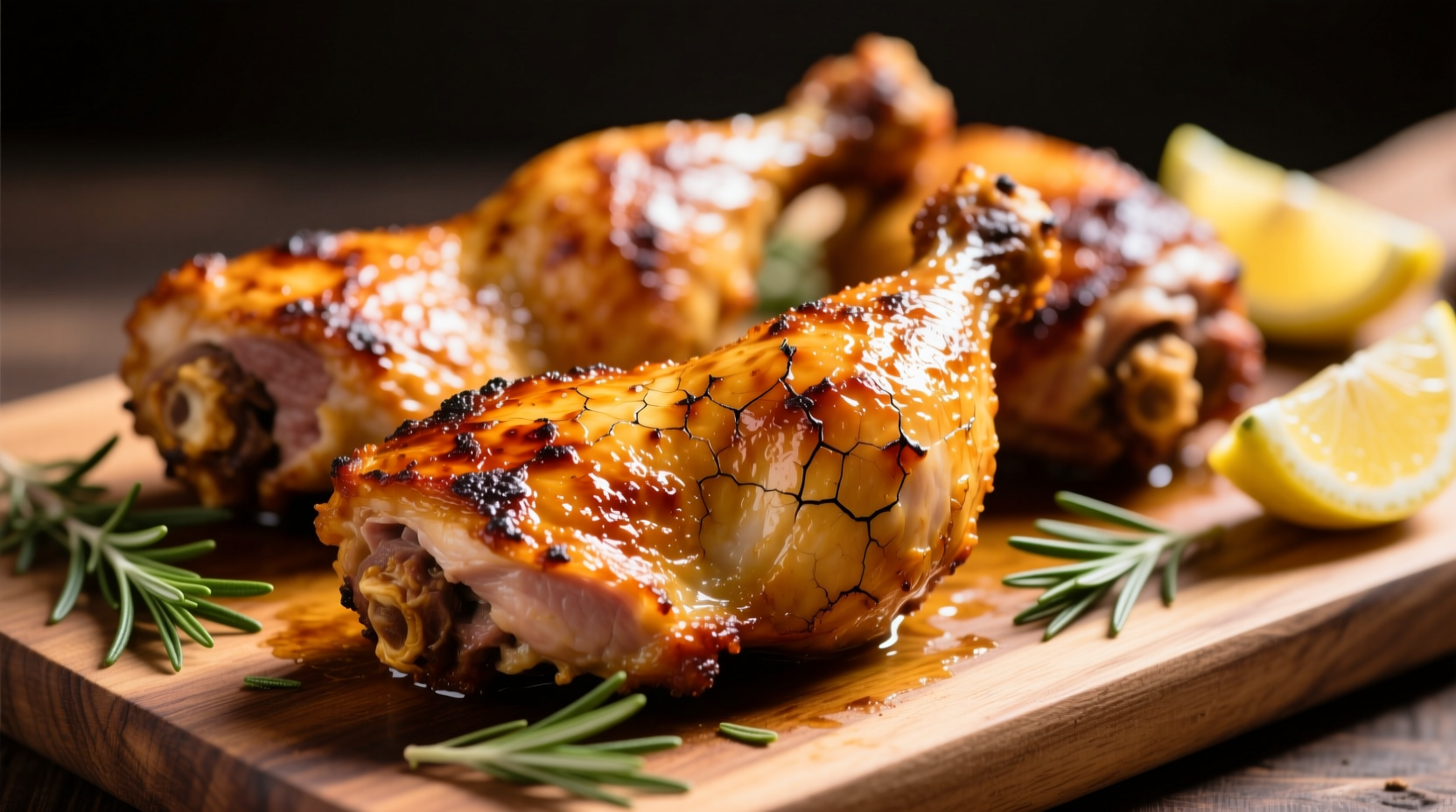Perfectly cooked chicken thighs should be juicy with crispy skin and no pink near the bone. Getting the timing right transforms this affordable cut into a restaurant-quality meal. Whether you're a beginner cook or looking to refine your technique, this guide delivers precise timing, temperature control, and professional tips for flawless oven-baked chicken thighs every time.
Why Timing Matters for Chicken Thighs
Unlike chicken breasts, thighs contain more fat and connective tissue, requiring proper cooking time to tenderize without drying out. Undercooked thighs risk Salmonella exposure, while overcooked thighs become tough and rubbery. The USDA Food Safety and Inspection Service confirms that poultry must reach 165°F internally to eliminate harmful bacteria (USDA FSIS).
Factors That Change Your Cooking Time
Four key variables determine exactly how long to cook chicken thighs in oven:
| Factor | Effect on Cooking Time | Time Adjustment |
|---|---|---|
| Bone-in vs Boneless | Bone insulates meat | +5-10 minutes for bone-in |
| Skin-on vs Skin-off | Skin slows heat transfer | +3-5 minutes for skin-on |
| Oven Temperature | Higher heat cooks faster | 400°F: 35-45 min; 375°F: 45-55 min |
| Starting Temperature | Cold meat needs more time | +5 minutes if refrigerated |
Step-by-Step Cooking Process
Follow this professional method for consistently perfect results:
Preparation (5 minutes)
- Pat thighs dry with paper towels (critical for crispy skin)
- Rub with 1 tbsp oil and season generously
- Arrange skin-side up on wire rack over baking sheet
Cooking Timeline
- Preheat oven to 425°F (220°C) - never put chicken in a cold oven
- Roast 25 minutes - skin begins crisping, edges brown
- Flip thighs (optional for even cooking)
- Continue roasting 10-20 minutes until internal temperature reaches 165°F

How to Verify Doneness Without Guessing
Visual cues alone can't guarantee safety. Use these reliable methods:
- Digital thermometer: Insert into thickest part, avoiding bone (165°F = safe)
- Juice test: Clear (not pink) juices when pierced
- Texture: Meat feels firm but yields slightly when pressed
Remember that chicken continues cooking during resting. Remove thighs at 160°F for carryover cooking to reach 165°F. The FDA Food Code confirms this approach maintains safety while preventing overcooking (FDA Food Code 2022).
Troubleshooting Common Issues
Dry or Tough Thighs
Cause: Overcooking or insufficient fat rendering
Solution: Reduce oven temperature to 400°F and check 5 minutes earlier. For next time, try brining thighs in 1/4 cup salt + 4 cups water for 30 minutes before cooking.
Burnt Skin, Raw Center
Cause: Oven too hot or improper positioning
Solution: Start at 425°F for 20 minutes, then reduce to 375°F. Place thighs on middle rack, not too close to heating element.
Pro Tips for Restaurant-Quality Results
- Crispiest skin: Refrigerate uncovered for 1-2 hours before cooking
- Flavor boost: Add lemon slices and fresh herbs under thighs
- Even cooking: Arrange thighs with curved side down
- Resting: Tent loosely with foil for 5-10 minutes before serving
When Standard Guidelines Need Adjustment
These timing recommendations apply to conventional ovens with standard baking sheets. Adjust when:
- Using convection oven: Reduce time by 25% or lower temperature by 25°F
- Cooking frozen thighs: Add 15-20 minutes and check temperature frequently
- High altitude locations: Increase time by 5-10 minutes above 3,000 feet
- Very thick thighs (over 1 inch): May need additional 5 minutes
Frequently Asked Questions
Can I cook chicken thighs at 350°F instead of 400°F?
Yes, but cooking time increases to 50-60 minutes at 350°F. Lower temperatures risk drying out the meat as moisture evaporates longer. For best results, use 400-425°F to render fat properly while keeping meat juicy.
How do I know if chicken thighs are done without a thermometer?
Check for clear juices when pierced with a knife, firm texture when pressed, and golden brown skin. However, visual cues aren't reliable for food safety. The USDA strongly recommends using a digital thermometer as the only accurate method to verify 165°F internal temperature.
Should I flip chicken thighs when baking?
Flipping isn't necessary but can promote even browning. For crispier skin, cook skin-side up the entire time. If flipping, do so after 25 minutes when skin has set. Professional chefs often skip flipping to maintain skin integrity.
Why are my chicken thighs still pink near the bone?
Pink color near bones in dark meat is normal and doesn't indicate undercooking. This occurs due to myoglobin in bone marrow seeping into meat. As long as internal temperature reaches 165°F throughout, the chicken is safe to eat regardless of color.











 浙公网安备
33010002000092号
浙公网安备
33010002000092号 浙B2-20120091-4
浙B2-20120091-4